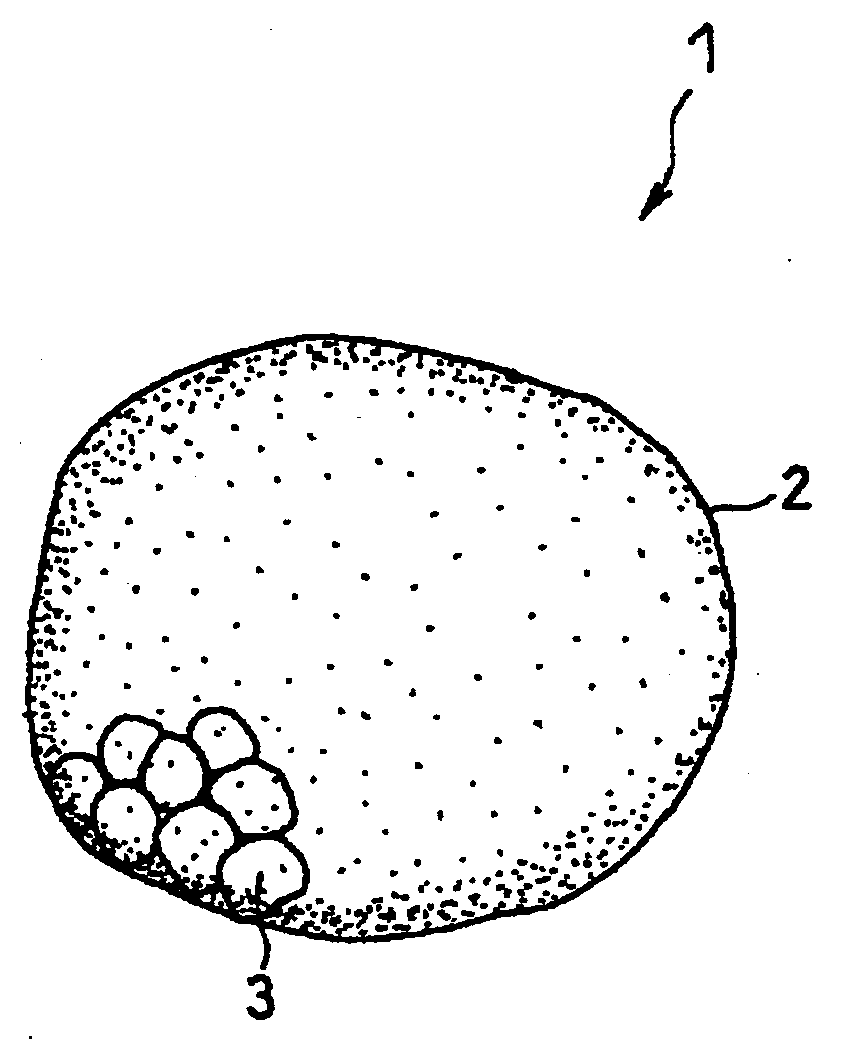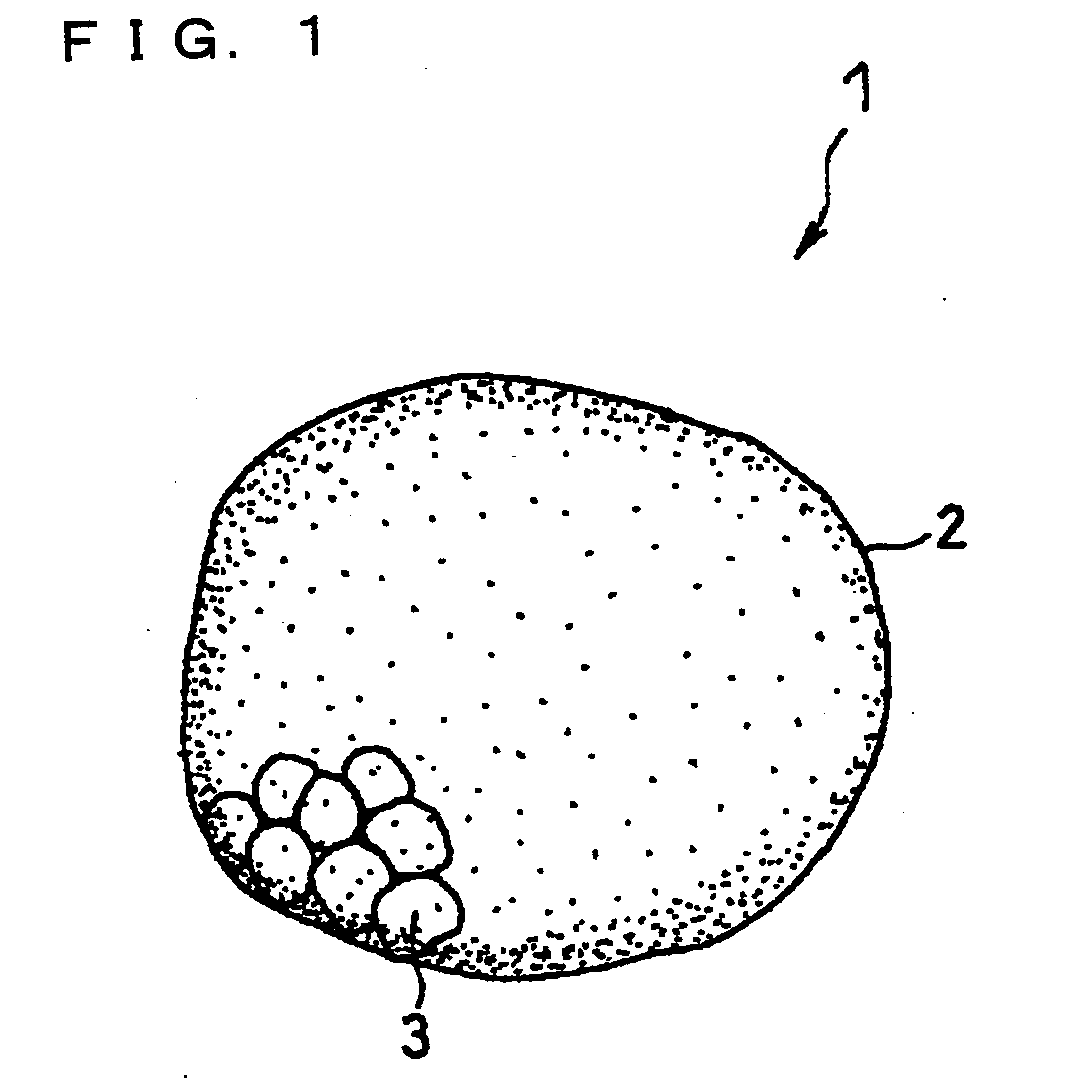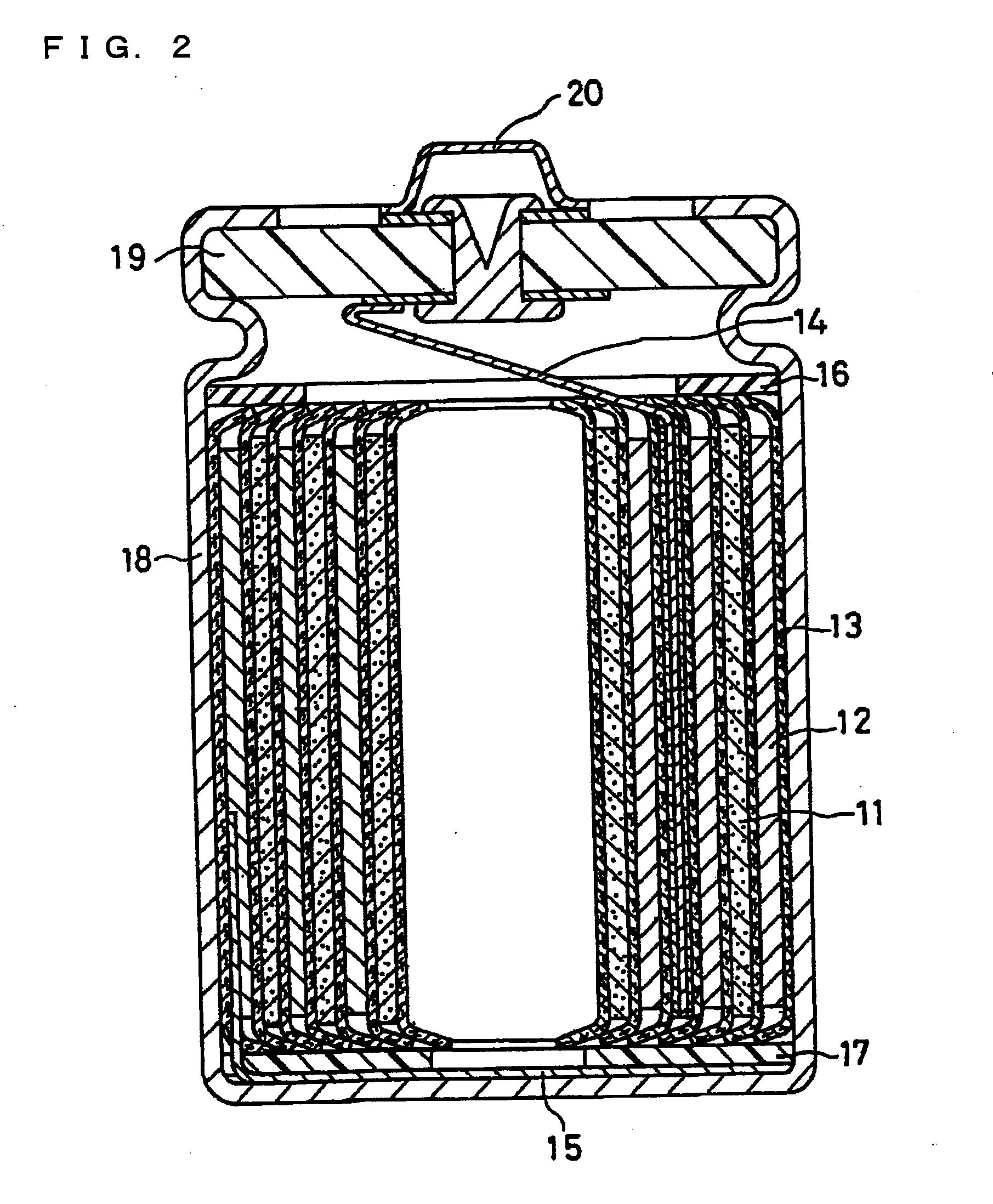Non-aqueous electrolyte secondary battery
a non-aqueous electrolyte, secondary battery technology, applied in the direction of cell components, chemistry apparatus and processes, nickel compounds, etc., can solve the problems of deterioration of the cycle characteristics of the battery, inability to maintain long distances, and increase the internal resistance of non-aqueous electrolyte secondary batteries. achieve excellent cycle characteristics, prevent cracks, and prevent deterioration of the active material of the positive electrod
- Summary
- Abstract
- Description
- Claims
- Application Information
AI Technical Summary
Benefits of technology
Problems solved by technology
Method used
Image
Examples
example 1
(Battery 1)
(1) Formation of Positive Electrode Plate
[0084]First, a positive electrode active material was prepared in the manner as described above.
[0085]Powdered nickel-cobalt composite hydroxide (Ni0.85Co0.15)(OH)2 was added to water, and while being stirred, an aluminum sulfate aqueous solution (concentration: 1 mol / L) and a sodium hydroxide aqueous solution (concentration: 1 mol / L) were added thereto dropwise. Here, the molar ratio of the total amount of Ni and Co to Al was set to be 93:7.
[0086]The resultant particles containing Al were washed with water and dried, thereby to prepare a nickel-cobalt composite hydroxide with the surfaces coated with aluminum hydroxide (hereinafter referred to as a “precursor A”).
[0087]The precursor A thus obtained was mixed with lithium hydroxide (Li(OH)2). In the resultant mixture, the molar ratio of lithium to the total amount of metal elements contained in the precursor A was set to be 1:1.
[0088]The mixture was baked at 760° C. for 12 hours in...
example 2
[0101]The precursor A as prepared in Example 1 was mixed with lithium hydroxide. In the resultant mixture, the molar ratio of lithium to the total amount of metal elements contained in the precursor A was set to be 1:1.
[0102]The resultant mixture was baked at 790° C. for 12 hours in an oxygen atmosphere, to prepare a positive electrode active material B. The prepared positive electrode active material B was Li(Ni0.85Co0.15)0.93Al0.07O2. The average particle diameter of the positive electrode active material B being the secondary particles was 10 μm.
[0103]A battery B was fabricated in the same manner as in Example 1 except that the positive electrode active material B was used.
PUM
| Property | Measurement | Unit |
|---|---|---|
| particle diameter | aaaaa | aaaaa |
| particle diameter | aaaaa | aaaaa |
| particle diameter | aaaaa | aaaaa |
Abstract
Description
Claims
Application Information
 Login to View More
Login to View More - R&D
- Intellectual Property
- Life Sciences
- Materials
- Tech Scout
- Unparalleled Data Quality
- Higher Quality Content
- 60% Fewer Hallucinations
Browse by: Latest US Patents, China's latest patents, Technical Efficacy Thesaurus, Application Domain, Technology Topic, Popular Technical Reports.
© 2025 PatSnap. All rights reserved.Legal|Privacy policy|Modern Slavery Act Transparency Statement|Sitemap|About US| Contact US: help@patsnap.com



